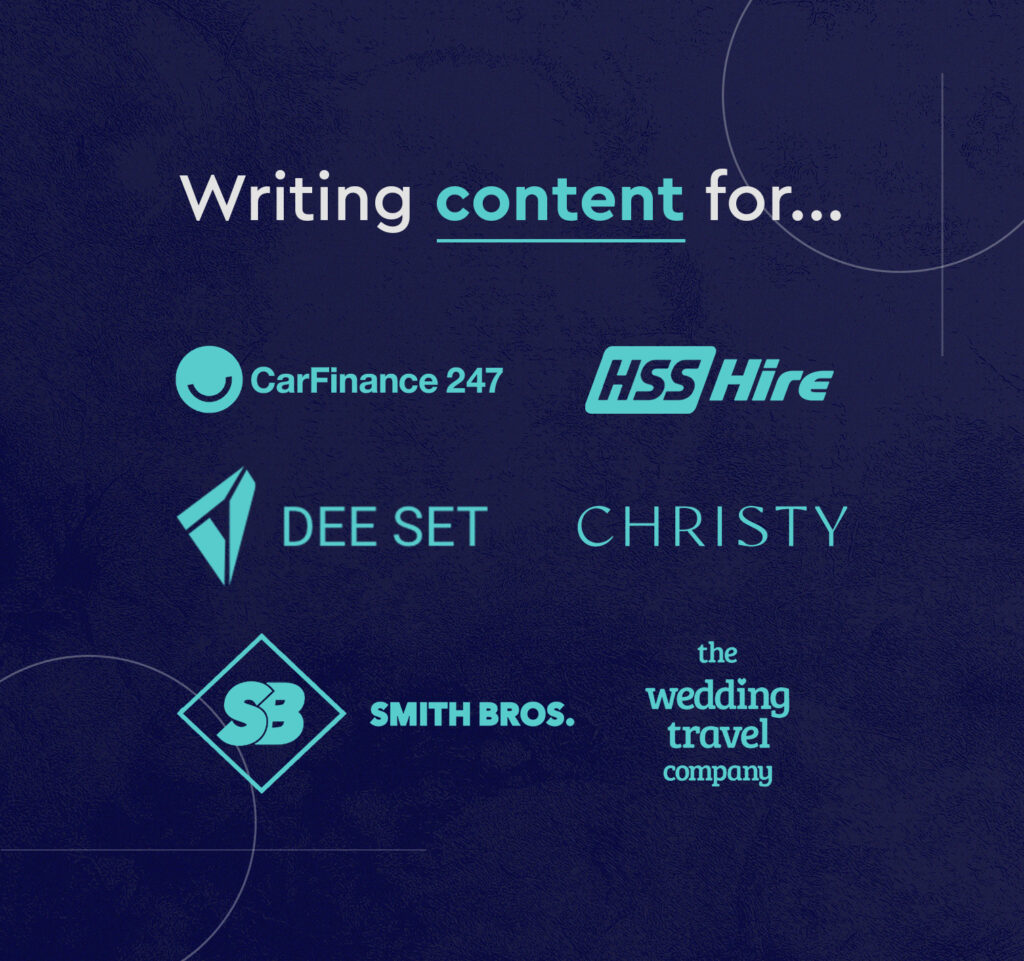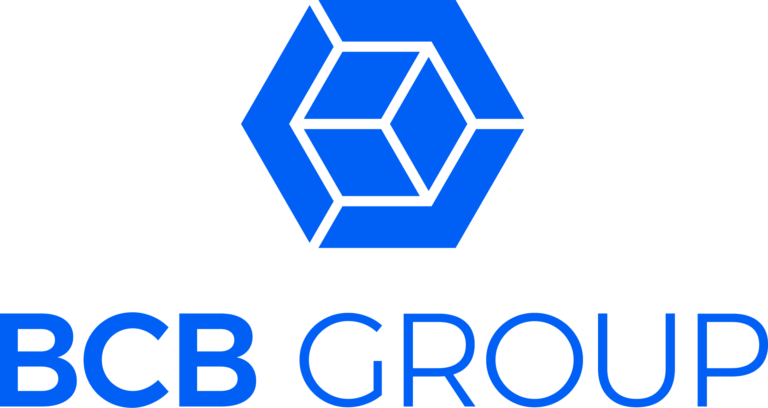
The Innovative SEO Content Marketing Agency
As a Manchester-based SEO content marketing agency, we produce SEO content that resonates and ranks high. We use our insight to identify opportunities you’ve never noticed and build results-driven SEO strategies that get your website seen.
Our writers will infuse your website with the love and attention it deserves. From ideation and research to skilful copywriting and reporting, our passion and performance-focussed mindset guarantee you’ll dominate the SERPs.
Let us embody your brand voice. Let us showcase your expertise and craft copy that keeps customers landing on your site time and again. We’re not just here to sprinkle keywords into content, we’re here to help you convert leads and build trust.
Ready to claim position 1? Excited to enhance your web copy?
Ask us for a free SEO copywriting proposal today.
Burgess Pet Care
Burgess Pet Care
-
30.3
ROAS from paid social
-
440%
Increase in online transactions
-
346%
Increase in revenue
What Makes Our SEO Copywriting Agency Different?
- Our in-house tools and innovators keep us moving forward. We stay ahead of changing trends, algorithm updates and best practices, so your content has the best chance of ranking.
- Our team of writers and editors fall under our Organic team, so you get access to technical SEO and on-page optimisation too.
- Every piece of content goes through a comprehensive process, a 3-point review and a round of edits to ensure 10/10 quality.
- We don’t just focus on high search volume, we concentrate on ‘messy middle’ style content that’s relevant, useful and engaging.
- No industry is too complex. We write for clients in the crypto space, legal industries, creative businesses and e-commerce sites.
- A combination of cutting-edge tools, proven frameworks, raw talent and copywriting expertise is our recipe for success.
- Your competitors’ results motivate our activity and writing approach. We aim to create content better than anything else ranking on page 1.
- The content we publish never goes stagnant, we’ll keep track of rankings and make improvements/add extra copy where needed.
- We’ve developed an approach to E-E-A-T content before other agencies.
Brands That Trust Our Content Strategies





What Is Content Marketing?
Content marketing is all about producing high-quality content that is relevant and useful to your audience. Content also forms a significant aspect of Google’s quality guidelines (known as E-E-A-T (Expertise, Experience, Authority and Trust). It is the proven practice of generating interest in your business and its products/services by creating and sharing relevant articles, videos, podcasts, and other media to engage them.
For this reason, you could say it’s the one core marketing strategy that puts the customer first, and pivots around their needs…
With a major business benefit, of course.
The logic behind content marketing is this. If your business puts out useful content on topics related to what you’re selling, the people who stumble across it – either coincidentally or those actively searching for it – will:
- Immediate win – Be hooked, with a primed intention to buy or enquire further
- Long-term win – Come to associate your brand as an authority on the topic and be more willing to seek out and engage with you in the future
Though option 1 is a definite possibility, the scenario of option 2 is where most content marketing lands. The saying amongst marketers, when comparing the goals of content-forward approaches to other results-driven types of marketing such as pay-per-click (PPC), for example, draws a distinction: ‘content resonates, advertising saturates’.
In this way, content marketing is mostly considered a long-term strategy, designed to boost your brand’s digital presence over time and ultimately drive targeted traffic to your website.
-
62%
Leading companies use content marketing to drive 6x more ROI from their marketing while spending 62% less (CMI)
-
5%
Only 5% of B2C marketers have no plans to develop a content marketing strategy, showing that the vast majority view it as a worthwhile investment (CMI)
-
68%
68% of online experiences begin with a search engine, meaning there is claimable traffic out there on the SERP, providing you rank (Brightedge)
Everything Our SEO Content Marketing Services Include
- Kick-off call to establish KPIs and expectations
- Tone of Voice guidelines and content workshop
- Keyword research & content strategy
- Comprehensive content optimisation process
- Market research using our own tools, Intermingle and Needle
- Internal and external linking
- Up to two rounds of amends
- Dedicated writer and SEO account manager
- Access to our wider Creative, UX and Web Development team
- Monthly SEO reports and performance reviews
- Optional uploading service
Let’s Set Your Tone: Creating a Brand Voice
Tone of Voice embodies who you are as a business.
Whether you want to cultivate your brand voice or sharpen your existing one, our guidelines will show you how to select the best words to demonstrate your core values and how best to apply them across multiple channels. Our comprehensive Tone of Voice guidelines become the ‘bible’ of your brand for all of your marketing materials.
-
User-Focused Blog Content
We produce informative, long-form blogs. Using our proven frameworks and SEO tools, we aim to write superior content that surpasses competitors.
-
Evergreen Guides
Websites with high-quality evergreen content have long-term value. We use data, fresh perspectives and creativity to craft useful content that converts.
-
Keyword-Rich Web Copy
We’ll optimise your existing landing pages and create more pages to target the right keywords – in all the right places. We’ll weave in persuasive writing techniques, internal links and SEO best practices to get you the best results.
-
Conversion-Focused Category Content
We craft eCommerce SEO content guided by keyword research, audience intent and user experience. By merging SEO and CRO strategies, we elevate the performance of your category pages.
-
Brand Pages
52% of users want to view your About Us page before they make a purchase decision, especially if your business is service-led. Our copywriters can work with you to create brand pages that make a lasting impression. This includes author bios, homepages and more.
-
PPC Landing Pages
The Organic team will collaborate with our PPC experts to create copy for sales pages. Our expertise lies in turning features into benefits, showcasing social proof and incorporating actionable CTAs to ensure the copy resonates and drives conversions.
-
Internationalisation
International SEO involves adapting the words on a page to the local lexicon. If you’re branching into the US market, we’ll ensure the language matches their English standards.
-
Local SEO Content
Our local landing page frameworks enhance how we create content for local SEO. Our writers optimise headers and meta tags to compete with other local businesses. By tailoring our content per geographical area, we improve visibility across the areas you operate in.

What Will Our SEO Copywriting Agency Achieve for You?
Google’s Helpful Content Guidelines are the backbone of our services. We tick all the right boxes and then add more of our creativity and flair.
We help your website appear for the terms you want to appear for, but our role expands beyond capturing high positions…
Our content creation can help your online business in numerous ways::
- Achieve higher search rankings
- Generate organic traffic
- Increase engagement
- Build brand awareness
- Obtain valuable backlinks
- Drive conversions
- Build topical authority
- Expand keyword reach
- Optimise user experience
- Enhance content readability
- Maintain compliance with Google’s standards
Our SEO Copywriting Process Explained: How Do We Write?
Every new client gets a personalised workflow based on where we think we can make the most impact. Whether it’s producing detailed 2,000-word guides to attract backlinks and drive authority or writing snappy 300-word product pages that steal attention, each piece goes through a quality-review process.
| 1. Keyword research and content strategy | 6. Strategic internal linking |
| 2. Competitor analysis | 7. Meta description and title tag creation |
| 3. Brief creation and subject research | 8. In-house editorial and team review |
| 4. E-E-A-T selection and client input | 9. Client approval and uploading |
| 5. First draft creation | 10. Ongoing performance tracking |
Why Is SEO Content Important?
Content marketing works because it helps people solve problems. The customer is put first, and the content is built to match what they’re seeking.
When a person has a problem, they turn to Google (83% of market share) and then click through to the most relevant or attention-grabbing link to get answers.
Here’s where SEO comes in.
SEO stands for search engine optimisation. It’s about making sure that your website ranks highly for related keywords on Google (or another search engine). This way, when a potential customer is browsing or seeking answers to questions related to something you sell, your website will appear as a relevant option for them to explore.
Therefore, the goal of SEO is to rank your website as high as possible so that people can find your page easily. Of course, all of your competitors will have the same goal so climbing the SERPs is not always straightforward and requires time and expertise. Like content marketing, SEO is a long-term strategy, but one that can bring massive benefits to your business’s staying power.
It cannot work by itself, though, and needs content to help match potential customers’ search queries to searched-for keywords.
Through targeted optimisation techniques and technical tune-ups, a qualified SEO expert will use content – be it web pages, blogs, articles, videos, etc. – to drive traffic to your website and keep its performance high.

How Content Impacts the Messy Middle
Essential to content marketing, the messy middle is a model developed by the brains at Google following meticulous research and data gathering. It adds a new spin to the traditional buyer’s journey.
Well, thanks to Google’s research, the old journey is old news – quite frankly!
With the rise of the personal computer and, even more so, the smartphone, the past two decades have seen the internet quickly become embedded in our everyday lives. It’s everywhere, and we’re all on it, with different demographics hitting record internet usage.
The amount of content available now is seemingly infinite, with there officially being more phones than people to keep everyone within reach.
With this in mind, the team at Google have demonstrated the impact that this tide of super-accessible and immediate information has had on how we make purchase decisions.
Need a Fresh Take on Your Content Marketing Strategy? Let’s Talk
At Embryo, we are an award-winning full-service digital marketing agency based in Manchester specialising in lead generation, web design, SEO, social media and content marketing.
If your content marketing strategies haven’t quite met your goals or you’re wondering how to give your audience something new to get excited about, then let’s talk.
BCB Group
Using a modern, multi-channel marketing strategy to transform a business into an authority in an emerging market
-
149%
Increase in page views
-
11.7%
Decrease in bounce rate
-
97/100
Core Web Vital score
-
67
Position 1-3 keywords
Content Questions Answered:
-
How do we measure content’s influence on sales and revenue?
Hannah: Did a reader click on an ‘Enquire Now’, ‘Find Out More’ or ‘Book A Consultation’ button? Did their user journey see them read a blog about a product you sell, and then add that product to their basket? Did they engage with a social media campaign and decide to take you up on that ‘must have’ service? It’s pretty simple and Google Analytics and the right tracking can help.
-
How do we measure the effectiveness of content marketing?
Hannah: Well, that all starts with your goals. What are you trying to achieve with your content, and how do the results match up? If, for example, you want people to buy the latest television from you, how many people engaged with your email marketing campaign (or latest blog) on the topic and then went on to buy said TV from you? Setting goals and tracking conversions is of the utmost importance, can help you to see what is and isn’t working, and therefore, produce the best possible outcome.
-
How often should I create content?
Whenever you can! Content can be a fantastic resource as long as you keep it relevant and up to date. That means you don’t have to put together an essay from scratch every day, but keeping your content fresh is always a step in the right direction.
-
How can I leverage existing content in my content marketing strategy?
If your existing content isn’t ranking highly on Google, that doesn’t mean you should give up on it. Existing pages can be SEO-optimised with an injection of fresh content that’s valuable, in-depth and full of proper links and keywords. Old pages can even be transformed into content pillars or ‘main hubs’, which will link out to several ‘sub’ pages relating to that topic. Those pages will then link back to this main hub, vastly improving the SEO performance of the page.
-
What’s the difference between content marketing and social media?
The main difference between content marketing and social media is the length of the content. Social media calls for short and snappy content that can be easily digested and shared by users on those platforms. Content marketing, on the other hand, is geared towards search engines, where in-depth, long-form content rises to the top (literally).
-
How does content drive revenue?
Good content marketing is all about getting people on-site and keeping them there with informative and authoritative content that they both trust and enjoy. By supporting your SEO efforts, content drives traffic to the site, increases visibility, improves user experience and pushes for conversions.








